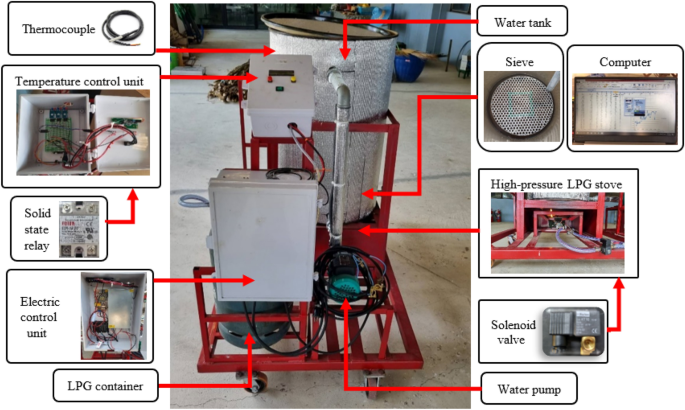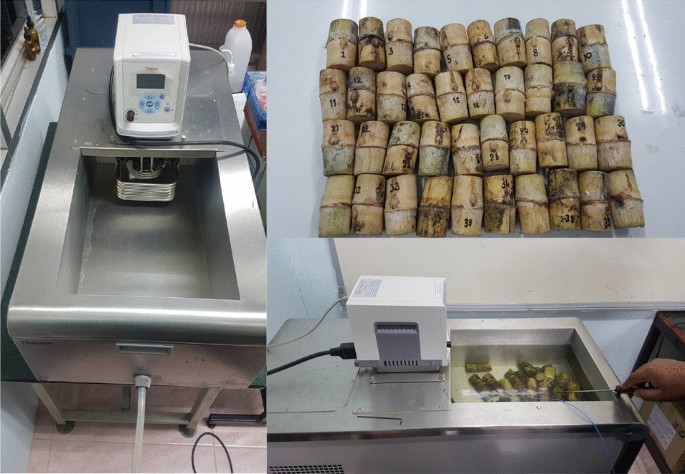Unlocking the Prospective of Products From Sugarcane: a Comprehensive Overview
The capacity of sugarcane expands much past its conventional use for sugar production. This guide checks out the complex applications of sugarcane, from power and biodegradable materials to health items. By analyzing its trip from area to manufacturing facility, it exposes exactly how sustainable methods can change waste into beneficial resources. As markets look for eco-friendly solutions, the inquiry stays: just how can these innovations improve our approach to agriculture and production?

The Trip of Sugarcane: From Area to Manufacturing facility
Sugarcane undergoes a fascinating transformation as it travels from lush fields to busy manufacturing facilities. In the areas, the high, eco-friendly stalks are harvested, commonly by mechanical methods or manual work. As soon as reduced, the sugarcane is swiftly carried to refining facilities to assure maximum freshness. At the manufacturing facility, the initial step includes crushing the walking cane to remove the sweet juice, which consists of sucrose. Products From Sugarcane. This juice is after that filteringed system and cleared up, removing impurities. Following this, it undertakes dissipation to concentrate the sugar web content, leading to formation. The resulting sugar crystals are divided from the staying molasses via centrifugation. Lastly, the sugar is dried and packaged for distribution. Throughout this journey, keeping quality and effectiveness is crucial, as the approaches used straight effect the product's final top quality. This change not just highlights the farming value of sugarcane yet also its considerable duty in the global economic climate
Sugar and Its By-products: Greater Than Simply Sweet taste
The makeover of sugarcane into refined sugar opens the door to a large selection of products and applications that extend past plain sweet taste. Sugar and its derivatives, such as molasses, brown sugar, and sugar, play crucial roles in different markets, including food, drugs, and cosmetics. In the food sector, these components improve flavors, improve structure, and serve as preservatives.Molasses, a by-product of sugar manufacturing, is abundant in vitamins and minerals, making it a valuable component in organic food and pet feed. Sugar, a straightforward sugar derived from sugarcane, works as a considerable power resource in sports nutrition and is vital in the manufacturing of confectionery. In addition, sugar by-products are made use of in fermentation procedures, adding to the manufacture of alcohols and various other microbial items. Overall, the flexibility of sugar and its derivatives highlights their importance past plain sweet taste in day-to-day life.
Biofuels: Harnessing Energy From Sugarcane

A substantial part of global biofuel production now counts on sugarcane, acknowledged for its high energy yield and performance in converting sunshine right into biomass. This tropical plant acts as a primary resource for ethanol, a renewable fuel that can replace fuel in automobiles. Sugarcane's capability to produce even more ethanol per hectare than other feedstocks, such as corn, adds to its boosting popularity among biofuel producers.The fermentation procedure of sugarcane juice or molasses generates ethanol, which can be combined with fossil gas to minimize greenhouse gas emissions. In addition, by using the recurring bagasse from sugarcane handling, energy can be created with combustion, more enhancing the sustainability of biofuel manufacturing. As nations seek to minimize climate modification effects, sugarcane biofuels offer a promising remedy, boosting power safety and promoting agricultural sustainability while supporting country economies.
Naturally degradable Plastics: The Lasting Alternative
Exactly how can sectors change to more sustainable techniques in the face of growing plastic contamination? One encouraging option hinges on biodegradable plastics stemmed from sugarcane. Unlike typical petroleum-based plastics, these bioplastics provide an environmentally friendly alternative that can considerably lower ecological impact. Made from sustainable sources, sugarcane-based plastics decompose extra rapidly in numerous conditions, reducing landfill accumulation and marine debris.The manufacturing of naturally degradable plastics not only addresses waste monitoring difficulties but likewise lines up with the boosting customer demand for sustainable products. Industries embracing these materials can enhance their brand picture while contributing to a circular economic situation. In addition, the adjustment to eco-friendly alternatives motivates technology and financial investment in brand-new modern technologies, promoting a greener market landscape.As a lot more business identify the advantages of sugarcane-derived plastics, the possibility for prevalent adoption increases, paving the way for an extra lasting future in product packaging and product design.
Animal Feed and Fertilizers: Making Use Of Byproducts
The results of sugarcane handling hold substantial possibility for both animal nutrition and natural fertilizers. These results can be included into animal feed, offering necessary nutrients while lowering waste. In addition, they can work as effective natural fertilizer alternatives, improving soil health and promoting lasting farming techniques.
Byproducts in Animal Nutrition
While sugarcane is largely valued for its sucrose content, its byproducts play an essential role in pet nutrition, particularly in the kind of animal feed and fertilizers. The coarse deposit referred to as bagasse, produced during the removal of juice, works as a beneficial source of roughage for animals. This high-fiber material improves food digestion and promotes general health and wellness in ruminants. Additionally, molasses, a by-product of sugar refining, is abundant in energy and can be made use of to supplement animal diet regimens, boosting palatability and nutritional value. Vinasse, a fluid by-product from ethanol manufacturing, includes essential nutrients and can be used as a feed additive. On the whole, sugarcane results add substantially to sustainable pet nutrition practices.
Organic Plant Food Options
Using sugarcane by-products expands past animal nutrition to incorporate organic fertilizer alternatives that profit farming methods. The coarse residues, such as bagasse and filter cake, function as efficient organic fertilizers, enhancing dirt health and improving plant returns. These products are abundant in nutrients, consisting of nitrogen, phosphorus, and potassium, crucial for plant development. When decomposed, they boost dirt framework, water retention, and microbial activity, promoting a lasting farming ecological community. Additionally, using sugarcane results for fertilization reduces dependence on synthetic plant foods, promoting eco-friendly farming methods. By reusing these by-products, farmers can contribute to a round economic climate while optimizing their performance and minimizing waste. This strategy exemplifies cutting-edge approaches in lasting site farming, leveraging sugarcane's complete possibility.
Wellness and Wellness: Nutritional Benefits of Sugarcane
Countless research studies highlight the dietary advantages of sugarcane, making it a beneficial enhancement to a well balanced diet plan. Rich in essential nutrients, sugarcane consists of considerable amounts of vitamins, minerals, and carbs, particularly vitamin Potassium, calcium, and c. These parts add to general health, sustaining immune function and bone strength.Moreover, sugarcane is an all-natural source of antioxidants, which help combat oxidative anxiety and swelling in the body. Its high fiber web content help in digestion, promoting intestine wellness and avoiding constipation. In addition, sugarcane juice has been connected to hydration and energy replenishment, making it an exceptional option for professional athletes or those engaging in strenuous activities.Furthermore, the glycemic index of sugarcane is fairly low, permitting a much more gradual release of power, which may be helpful for individuals handling blood sugar levels. Overall, integrating sugarcane site web right into one's diet plan can supply a rejuvenating and healthy choice for health-conscious people.
Innovations in Sugarcane Products: Future Trends and Opportunities
What advancements exist ahead for sugarcane items as industries seek to enhance sustainability and consumer allure? The future of sugarcane items is positioned for significant innovations, driven by the need for environment-friendly options. Advancements in bio-based packaging, stemmed from sugarcane, are acquiring traction, providing a sustainable replacement for standard plastics. Additionally, the expedition of sugarcane's bioactive compounds is likely to cause brand-new wellness supplements and functional foods, capitalizing on its all-natural benefits.Research right into fermentation processes might yield novel biofuels, even more branching out sugarcane's energy. The development of genetically modified sugarcane ranges guarantees increased yields and resistance to parasites, thus sustaining lasting farming practices. As customers become more eco conscious, the integration of openness in sourcing and manufacturing approaches will additionally play a vital function in forming the future of sugarcane products. Inevitably, these advancements might redefine sugarcane's position in global markets.
Regularly Asked Concerns
What Are the Ecological Effects of Sugarcane Farming?
The ecological influences of sugarcane farming include deforestation, loss of biodiversity, soil deterioration, and water air pollution - Products From Sugarcane. Additionally, extreme chemical and fertilizer usage can hurt environments, while monoculture techniques may lead to lowered durability versus environment change

Exactly How Is Sugarcane Processed Into Different Products?
Sugarcane handling entails harvesting, squashing, and extracting juice, which is then cleared up and concentrated. The resulting syrup can be fermented for ethanol or crystallized for sugar, while fibers are utilized for bioenergy and other items.

Exist Any Type Of Health And Wellness Dangers Connected With Sugarcane Usage?
The question of health threats related to sugarcane consumption highlights concerns such as excessive sugar consumption, prospective allergies, and gastrointestinal concerns. Small amounts is necessary to reduce these risks while appreciating its dietary advantages.
What Are the Economic Conveniences of Sugarcane Cultivation?
The financial advantages of sugarcane cultivation consist of task creation, increased farming efficiency, and contributions to neighborhood economic situations. Furthermore, it supports renewable resource production and supplies various spin-offs that can boost productivity within varied markets.
How Does Sugarcane Contrast to Other Renewable Resources?
Sugarcane, as a renewable energy, demonstrates higher performance in biomass production compared to lots of alternatives. Its convenience permits numerous results, adding especially to sustainable techniques, economic growth, and minimizing reliance on nonrenewable fuel sources. Sugar, a basic sugar derived from sugarcane, serves as a substantial energy resource in sports nourishment and is important in the manufacturing of confectionery. Sugarcane's ability to create even more ethanol per hectare than various other feedstocks, such as corn, contributes to its raising popularity among biofuel producers.The fermentation procedure of sugarcane juice or molasses creates ethanol, which can be blended with fossil fuels to lower greenhouse gas emissions. Furthermore, sugarcane juice has actually been connected to hydration and energy replenishment, making it an exceptional selection for professional athletes or those involving in difficult activities.Furthermore, the glycemic index of sugarcane is reasonably low, enabling for a more progressive launch of power, which may be advantageous for people taking care of blood sugar degrees. In enhancement, the expedition of sugarcane's bioactive substances is most likely to lead to brand-new health supplements and functional foods, utilizing on its natural benefits.Research right into why not find out more fermentation procedures might yield novel biofuels, further diversifying sugarcane's utility. The question of health risks associated with sugarcane consumption highlights issues such as extreme sugar intake, potential allergies, and intestinal concerns.